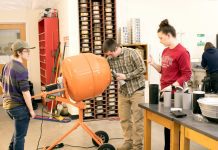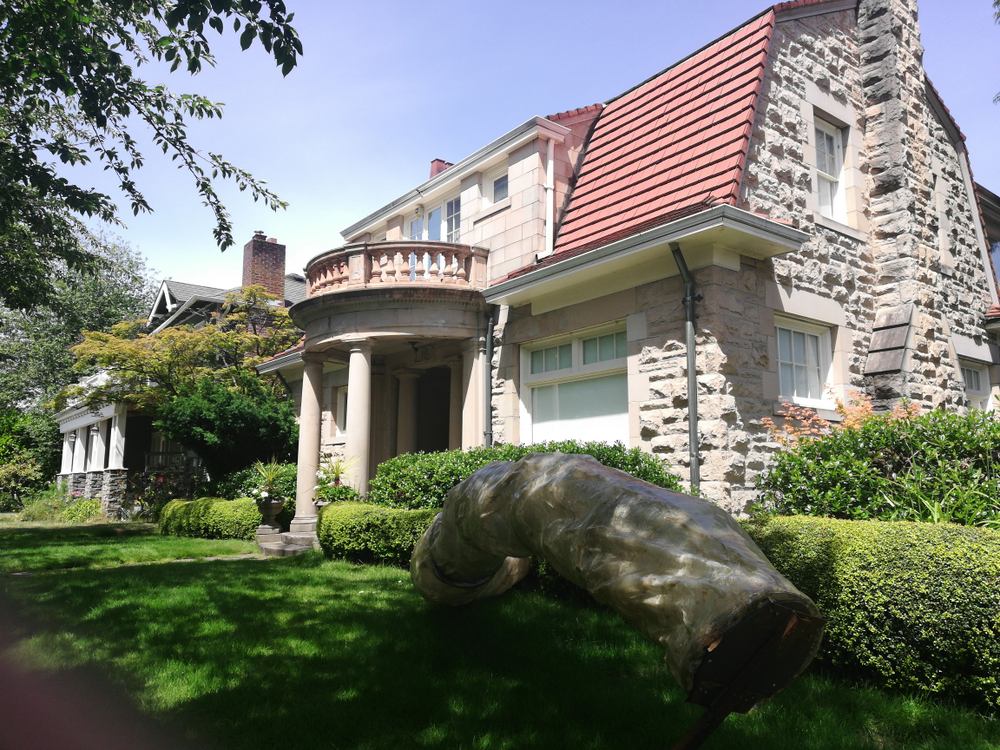Every living space, whether an apartment, lavish mansion or even your average living room, takes on the personalities of the people who use it. Family pictures line the side tables and couch colors match the owner’s tastes.
But not often does a living space alter the personality of the occupant. Such is the case with the owners of Tacoma’s famed “Elephant House,” however.
The steady stream of people wanting tours of Ray Gamble’s former home, with its historical displays and a performance stage in the basement, over the years has brought out the flair for the dramatic in Steve LaBerge and his wife Natalie.
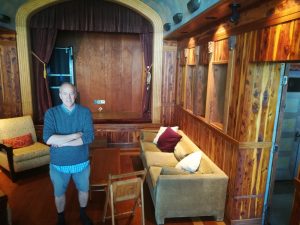
“It may be that Ray Gamble is channeling himself through Steve,” Natalie joked. “(The house) has certainly given us permission to be eclectic.”
The artist-turned-insurance agent is, after all, likely most known for his light-filled “Slug” at Alma Mater as well as his installation involving fiberglass televisions.
“I definitely feel that this house has affected us,” Steve said, noting that his appreciation of history as well as his tour guiding skills have decidedly improved during the 30 years of owning one of Tacoma’s most famed private homes. That transformation was not something they had planned for when they bought it.
“We simply wanted a view,” Steve said about first eyeing the N. 30th Street house that overlooks Commencement Bay three decades ago and then learning about its history to accommodate the parade of people who would all but certainly want to take photos of the house with questions about it.
They made the leap and opted to embrace the attention the house would bring them.
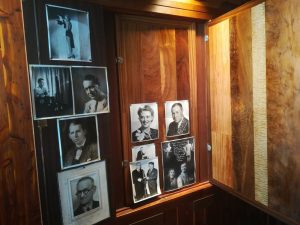
But why do people seek out their Dutch Colonial home?
The house was built in 1921 for Robert Walker. He was the owner of the Walker-Wilkeson Stone Co., so the home is flush with some of the finest sandstone appointments his company ever created. The fireplace, for example, is one of two ever made. Its sibling is in the Governor’s Mansion in Olympia. While interesting to architecturally minded people, the main draw of the home comes from the property’s next owner. Gamble bought the house in 1939.
Gamble lived a remarkable rages-to-riches story. He had ridden a boxcar to Tacoma in 1892 and arrived with just 82 cents in his tattered pockets. He then made a living first selling newspapers and then peddling fish only eventually to make his fortune by inventing a process to convert sawdust into a fine powder. That “wood flour” could then be used to control smells in fish processing plants as well as to stabilize explosives. He made millions.
Gamble was also the president of the West Coast Society of Magicians. That meant that not only did he add a magician’s stage in his basement to practice his sleight-of-hand craft, but he included a fair number of secret panels and false walls to maximize an air of mystery to the home. The hidden nooks also hid a collection of gambling machines that were illegal back in his day. Those roulette wheels spun into the early morning during his legendary house parties that drew some of the era’s top notables. Master magician Harry Houdini’s widow, Beatrice, ventriloquist Edgar Bergen, cowboy-humorist-turned-actor Will Rogers and filmmaker Orson Welles all paid visits. Tacoma was center stage of the magic world and its associated audience that was interested in the spiritual movement, after all.
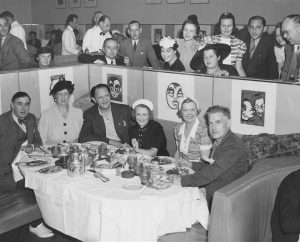
Gamble would also leverage his wealth to build a real estate empire that included what is now home to Knapp’s restaurant as well as the Casablanca Apartments, which still has one of the funkiest basements in the city thanks to Gamble’s collection of tiles from around the world.
He passed away at the age of 86 in 1972.
His house had gained the “The Elephant House” moniker because Gamble also collected all things elephant related. At its peak, his collection had more than 3,000 statues, lamps, planters, figures and stools. They once filled every room in the 3,400-square-foot house. Some of the statues still dot the house and yard to this day.
The house also has a few displays of photographs of Gamble’s most famous visitors as well as one of his 1940s radios, a mirror with Beatrice Houdini’s autograph, and a three-ring binder of photos, documents and histories about the house – all at the ready for the next tour request.








